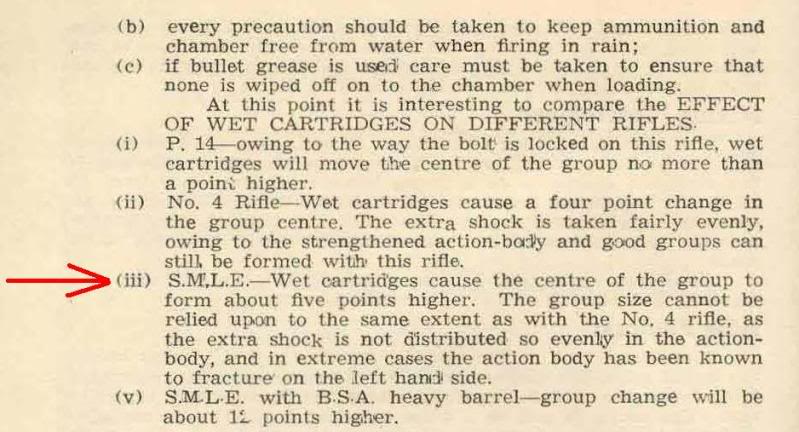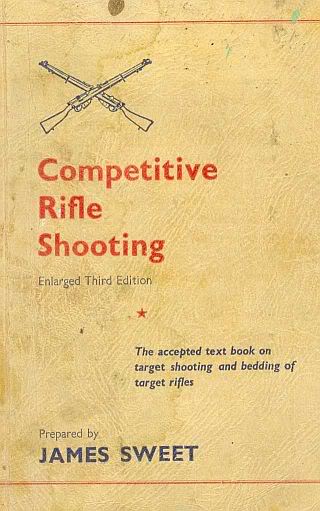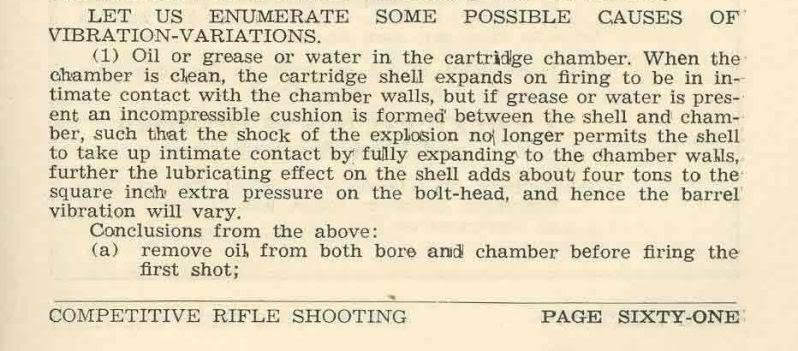-
Banned

-
08-10-2009 10:16 PM
# ADS
Friends and Sponsors

-
Advisory Panel


There are many good and honest people who sincerely believe that any lubricant on the cartridge or in the chamber produces an extremely hazardous condition. Others, equally honest and sincere, feel that no rational gun designer/manufacturer would create a military rifle that self-destructs when fired in a condition that is certainly common in service, where lubricants (including water) are frequently present on ammunition or in chambers.
My own experiences in handloading for various Lee-Enfields over a period of 50+ years tell me that the hazards are exaggerated and .303 case life can be significantly extended with a small quantity of lube - judiciously-applied, causing no measurable damage to a Lee-Enfield in good condition if normal sound handloading practices are followed. I have not made any comparative accuracy tests, lubed vs. dry, and therefore make no assertions on that subject. It seems a useful area for investigation by someone with the necessary resources, including an open mind and a good measure of curiosity.
Many individuals are more inclined to caution than to risk. This is a personality trait useful for survival in some situations - but may inhibit expansion of knowledge in other circumstances. It seems to me that many internet gun enthusiasts are the cautious types and enjoy posting dire warnings about practices they haven't investigated by any means other than reading selected publications. This is not a bad approach, per se, but does run the risk of stifling practical investigation and possible advancement of technique.
Believe nothing, no matter where you read it, or who said it - even if I have said it - unless it agrees with your own reason and your own common sense. - The Buddha
Last edited by Parashooter; 08-10-2009 at 11:57 PM.
-
-
whiterider
Guest

safety aspects of 'lubrication'....
Yes remembering the 303 days in Australian rifle clubs I can recall hearing of instances where rifles were 'damaged' after firing wet ammunition but never saw such a rifle.
rifle clubs I can recall hearing of instances where rifles were 'damaged' after firing wet ammunition but never saw such a rifle.
Of course in those far off days (Pre 1969) handloading was not permitted so rifle blow ups cant be laid at that door.....
As to the change in point of impact I can speak from actual experience. I always take pains to keep ammo for my 7.62 No.4s dry and free from oil/case lube.
One day at an early morning match there had been a heavy dew making the grass firing mounds really wet. We had a 'walk down' practice where you fire from 300 then 'walk' down to positions at 200 and then 100. Anyway I had my ammo clips in a plastic carry tray but dropped one clip onto the wet grass during a 'quick' reload.
I did my best to wipe it dry in the short time allowed but the rounds were still wet when they were loaded and fired.....sure enough my 200 yard target showed a very vertical spread with the (apparently) wet clip of 5 printing about 10 minutes high...(20 odd inches...)
Lost me that match. A lesson I never forgot. Perhaps the 7.62 No.4 is more prone to that than the 303..who knows. As for deliberately lubricating them...sure sounds crazy to me.
-
-
Legacy Member

The canvas breech covers were made and issued for a reason. Keep ammunition dry and the POI at the the POA as laid down in the manual. Cant have dead soldiers because their kit failed. Rule 1 Always carry more ammo than needed. Rule 2 see rule 1
Last edited by Bindi2; 08-11-2009 at 08:07 AM.
-
-
I think this thread has given everyone plenty of time and space to discuss their readings, beliefs and experience to the point that it's all been said.
I'm closing it as in my judgement its time to end this topic and move on.
Amatikulu
Last edited by Amatikulu; 08-12-2009 at 05:50 PM.
-
Thank You to Amatikulu For This Useful Post:
. Be very careful of what modern “experts” tell you about what is OK to do on the Enfield rifle. (Or any rifle)



















 Register To Reply
Register To Reply









